Transporting cargo using flatbed trailers is a common practice within various industries, including construction, logistics, and manufacturing. However, effectively securing a load on a flatbed trailer is critical for ensuring safety, compliance with the law, and minimizing damage during transit. This article serves as a detailed guide to accomplishing this essential task, breaking down the process into manageable components, while highlighting best practices and essential techniques.
Understanding the Importance of Load Security
When it comes to flatbed trailers, securing a load is not merely a precaution but an absolute necessity. Inadequately secured loads can lead to:
- Accidents: Shifting loads can destabilize a trailer, leading to accidents that could result in severe injury or loss of life.
- Legal Consequences: The law mandates specific securing techniques. Failing to comply could result in hefty fines.
- Damage to Cargo: An unsecured load may lead to damage or loss of cargo, impacting financial stability and customer relationships.
Types of Flatbed Trailers
Before diving into securing techniques, it’s crucial to understand the various types of flatbed trailers commonly in use:
| Type | Description | Use Case |
|---|---|---|
| Standard Flatbed | Basic design, flat surface, typically without sides or a roof. | General freight transport. |
| Step Deck Trailer | Lower deck height, allowing for taller freight. | Transporting oversized loads. |
| Drop Deck Trailer | Similar to a step deck but with a gradual slope. | For loading heavy machinery. |
| Dual-Axle Flatbed | Two axles support the load, providing stability. | Heavy or oversized freight transport. |
Understanding the load characteristics of your specific flatbed trailer type will influence your securing strategies.

Assessing Your Load
Identifying the specific characteristics of the load you are transporting is fundamental to choosing the appropriate securing method. Important factors to consider include:
- Weight: Heavier loads require more robust securing methods.
- Shape: Irregularly shaped cargo may need specialized securing techniques.
- Material: Fragile materials require gentle handling versus more robust materials that can withstand harsher methods.
Load Weight Limits
Always adhere to the weight limits established for your flatbed trailer. Exceeding these limits can compromise stability and lead to accidents. Each trailer type has specific weight capacities, typically indicated by the manufacturer.
Load Distribution
Even weight distribution is essential for maintaining stability. Ensure that:
- The heaviest part of the load is as close to the trailer’s center as possible.
- Weight is evenly distributed across the axles.
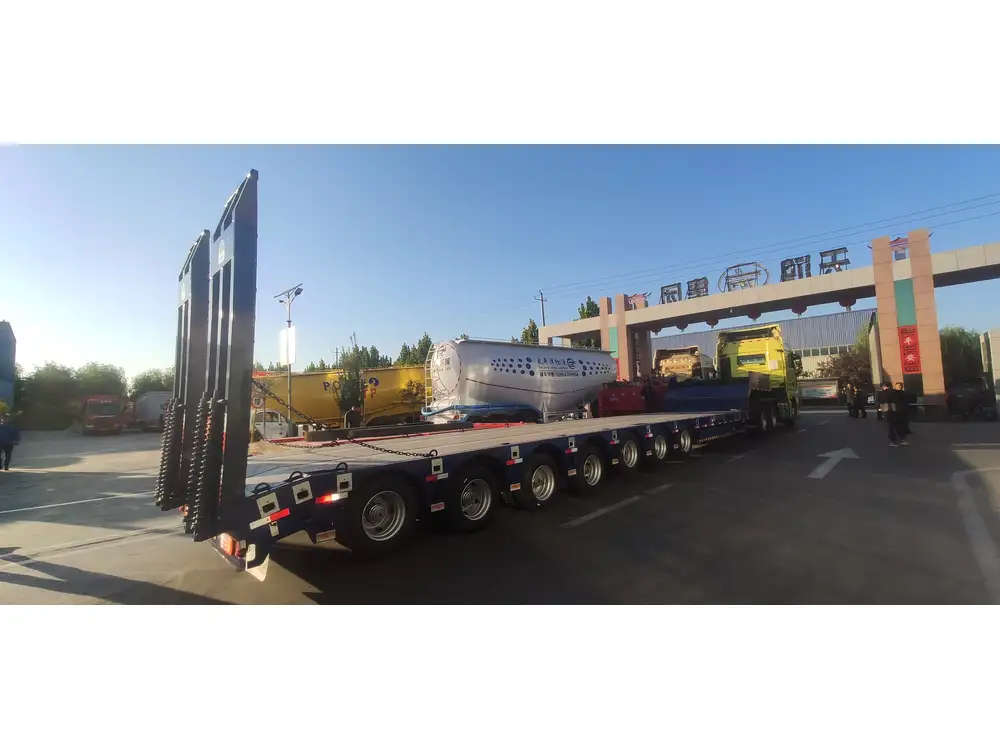
Choosing the Right Securing Equipment
Various equipment options facilitate the securing process. Choosing the right tools is essential for safe transportation. Here are the most common securing tools used:
1. Tie-Down Straps
Tie-down straps are the most commonly used securing method. They come in various material strengths and lengths, including:
- Ratchet Straps: Adjustable and provide a tight, secure fit.
- Webbing Straps: Made from durable materials but typically less secure than ratchet straps.
2. Chains and Binders
Chains offer a robust method for securing heavy loads. They are especially useful when transporting construction equipment. Binders are attached to tension the chains securely.

3. Corner Protectors
For sensitive loads, corner protectors serve to prevent strap damage by providing additional support at the corners of the cargo.
4. Load Bars
Load bars are effective for preventing cargo from shifting sideways. They span across your load and work together with other securing methods.
5. Tarps
For loads that are sensitive to weather elements, using tarps in conjunction with securing methods provides extra protection.
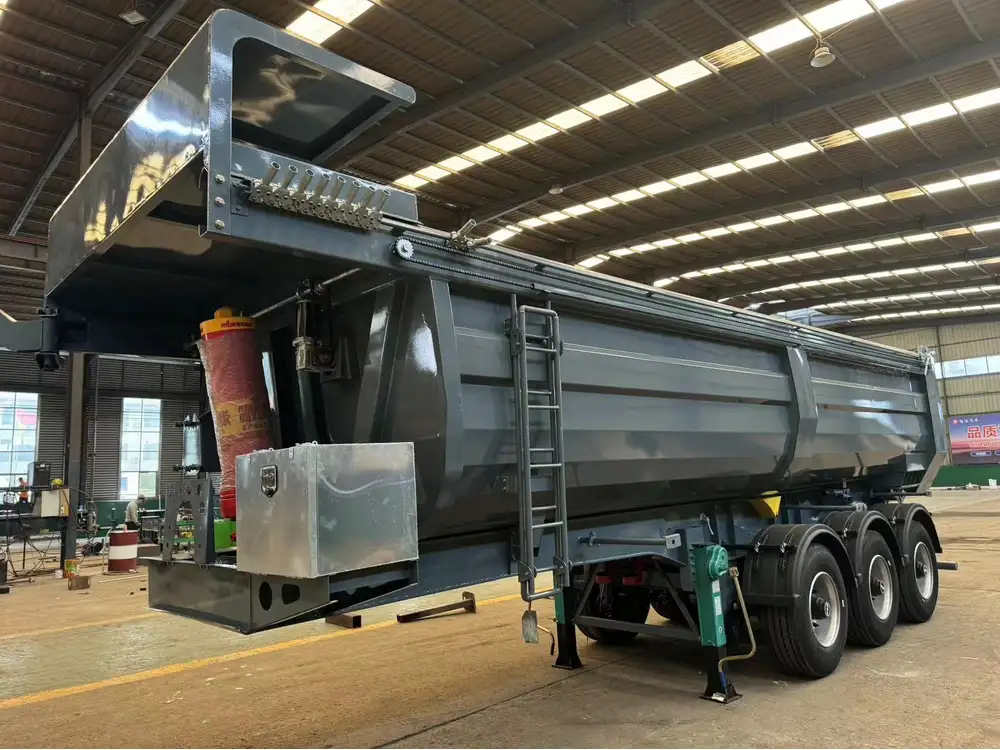
Securing Techniques
Once you have assessed your load and selected the appropriate equipment, it’s time to implement securing techniques effectively. Here’s a structured approach:
Step 1: Positioning the Load
Carefully position the load on the flatbed. Depending on its size and shape, adjustments may need to be made to ensure optimal weight distribution and stability.
Step 2: Using Anchor Points
Flatbed trailers are equipped with designated anchor points. Utilize these anchor points to create a secure fastening system, ensuring that whatever securing method you choose is anchored effectively.
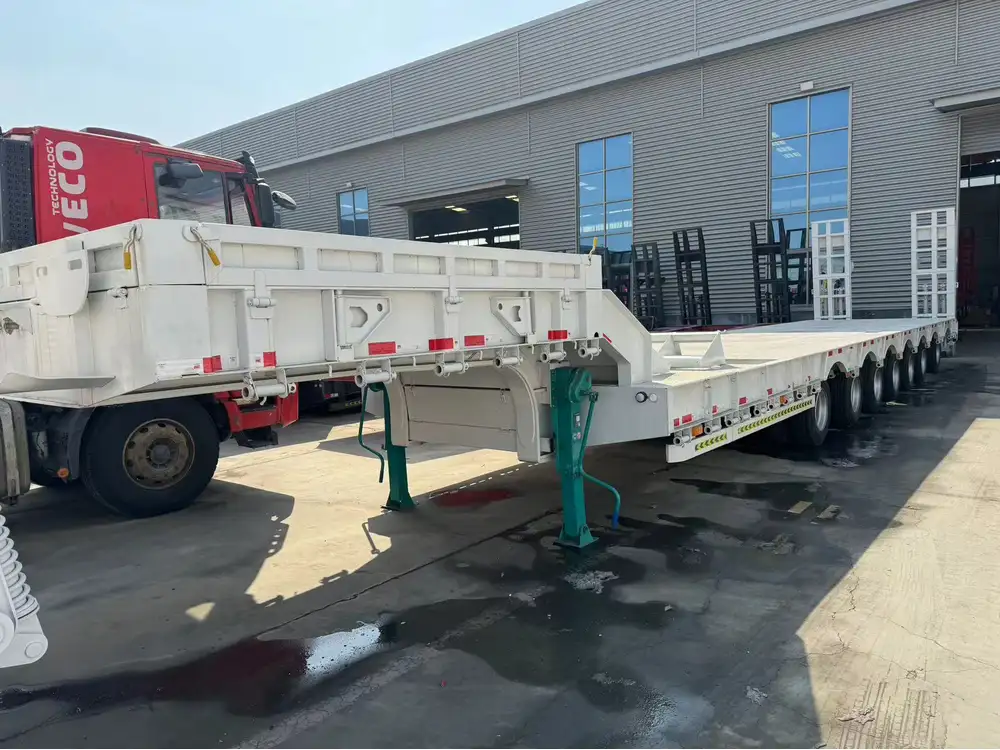
Step 3: Implementing Tie-Downs
Ratchet Strap Guidelines
- Attachment: Attach one end of the ratchet strap to an anchor point on the trailer.
- Wrap and Secure: Wrap the other end around the load, ensuring that it passes over the load’s most secure points.
- Tension: Use the ratchet mechanism to tighten the strap, ensuring it fits snugly without causing damage to the load.
- Double-Strap: For added security, consider using a second strap in the opposite direction.
Chain and Binder Technique
- Wrap the Chains: Run the chain around the load, ensuring it’s secured at anchor points on the trailer.
- Tension: Use a binder to tighten the chain securely, checking for excessive slack.
- Inspect: Recheck the tension after driving a short distance, as loads may settle.
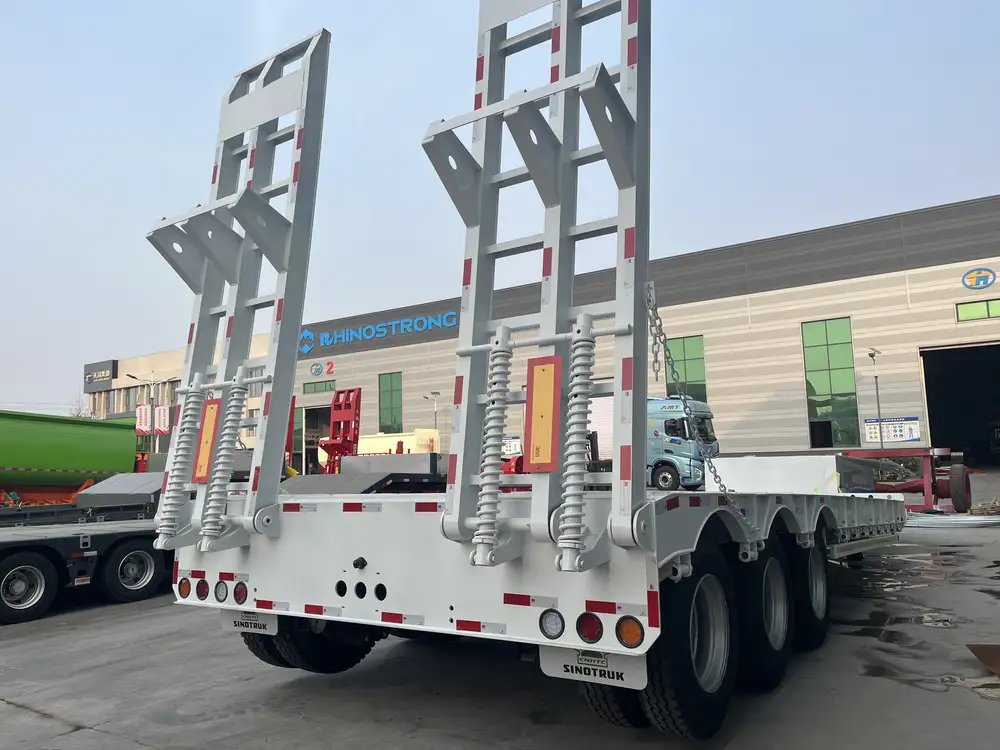
Step 4: Load Bar Installation
Position load bars horizontally across the load to provide additional support. Ensure they are tight and secured at both ends.
Step 5: Checking Visibility
Regardless of the securing methods employed, ensure that the load’s visibility is adequate and comply with any legal requirements concerning height and dimensions.
Legal Considerations for Load Security
Awareness of local regulations regarding load securing is crucial. The Federal Motor Carrier Safety Administration (FMCSA) provides guidelines for various types of loads. These regulations typically emphasize:
- Securing Consistency: All loads must be secured consistently across multiple anchor points.
- Load Limits: Certain legal weight limits must be complied with to prevent overheating of tires or equipment failure.
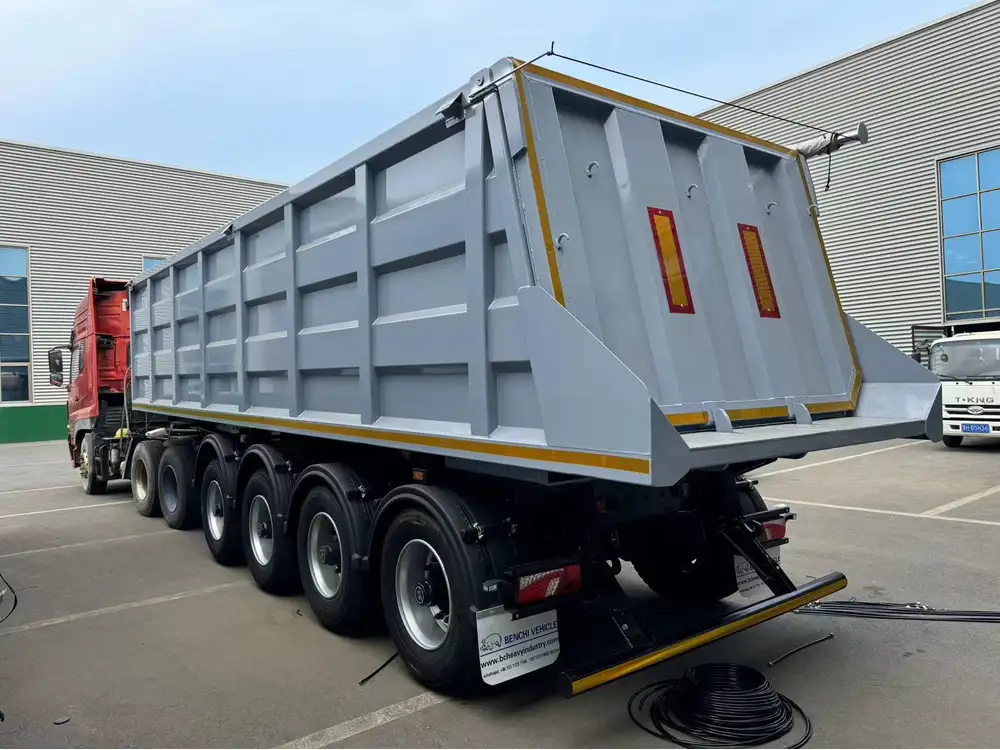
Recommended Practices to Avoid Legal Issues
- Regularly review and update securing methods based on legal changes.
- Always keep a record of load securement attachments.
Common Mistakes to Avoid
Even seasoned transporters can fall prey to common mistakes when securing loads. Here are critical pitfalls to avoid:
- Overstretching Straps: Exerting too much tension can cause strap failure. Monitor tension levels regularly.
- Insufficient Edge Protection: Failing to use corner protectors can lead to strap wear and tear, compromising load security.
- Neglecting Regular Inspections: Vehicles and securing methods should be inspected regularly to ensure compliance and safety.
Recommended Tools and Materials Checklist
Having the right materials on hand is vital for effective load securing. Here’s a checklist for easy reference:
| Tool/Material | Purpose |
|---|---|
| Tie-down Straps | Primary securing method for most loads |
| Chains and Binders | For securing heavy or unusual loads |
| Corner Protectors | To protect straps from wear and tear |
| Load Bars | To prevent sideways shifting of cargo |
| Tarpaulins | To protect sensitive loads from environmental factors |
| Safety Gl gloves and protective eyewear | To prioritize safety during loading and securing processes |
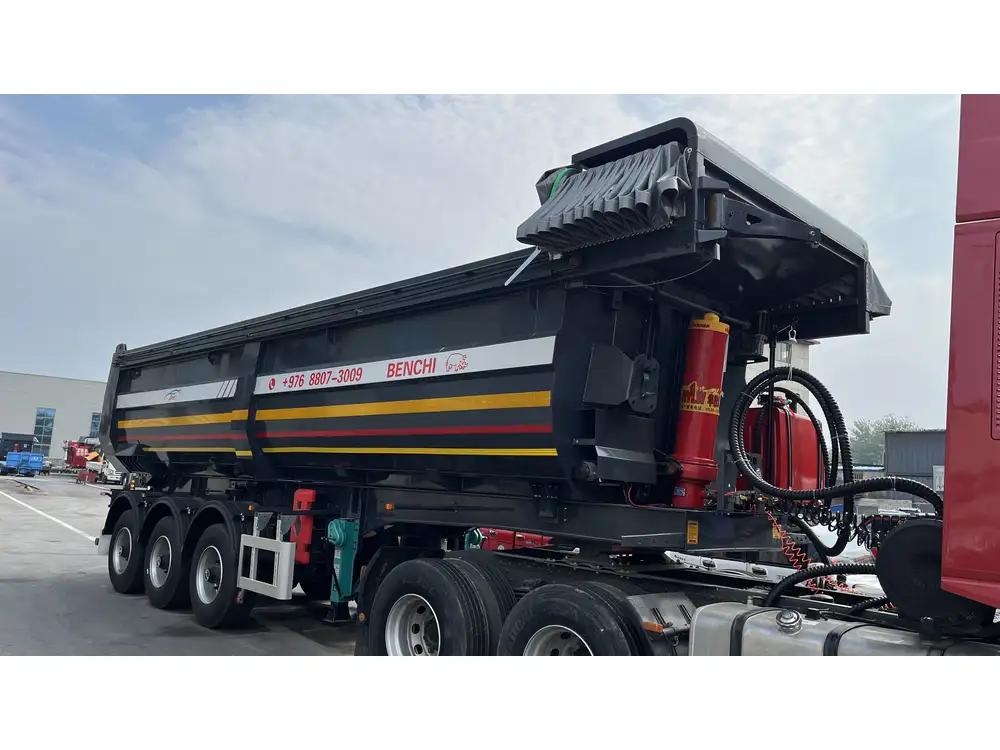
Final Checks and Best Practices
Before setting off, take the following final checks into account:
- Final Inspection: Examine your securing work. The load should remain intact and secure upon brief shaking.
- Visibility and Compliance: Ensure that your load doesn’t obscure your view or violate height regulations.
- Regular Maintenance: Keeping your securing equipment in excellent condition prolongs the equipment’s life and ensures effectiveness.
Conclusion
By taking a comprehensive and structured approach to load security on flatbed trailers, we significantly enhance safety across the transportation sector. Understanding the types of trailers, attention to load specifics, proper equipment selection, and adherence to regulations is crucial for every transport operator. For an industry founded on reliability and expertise, mastering effective load securing techniques stands as a benchmark for quality and safety.



